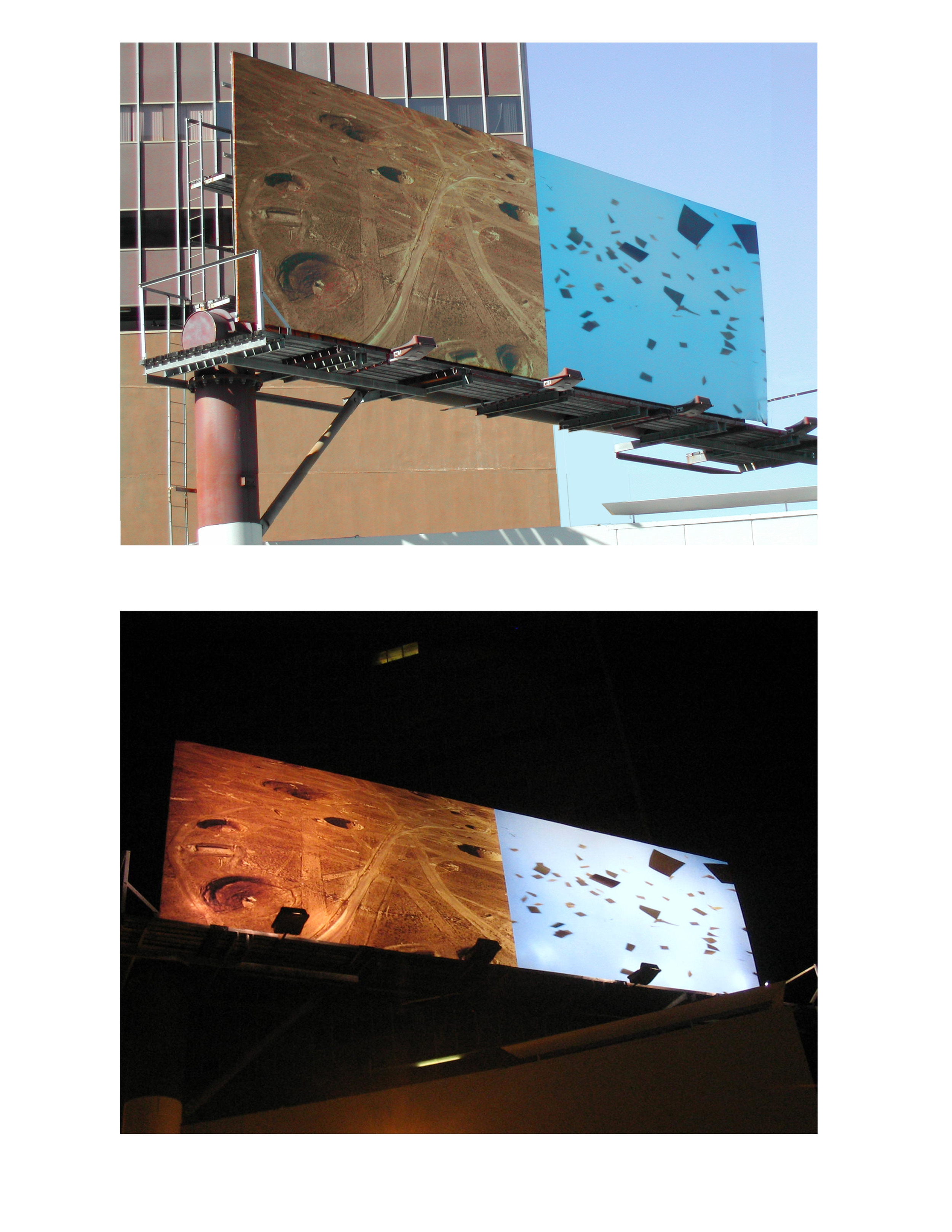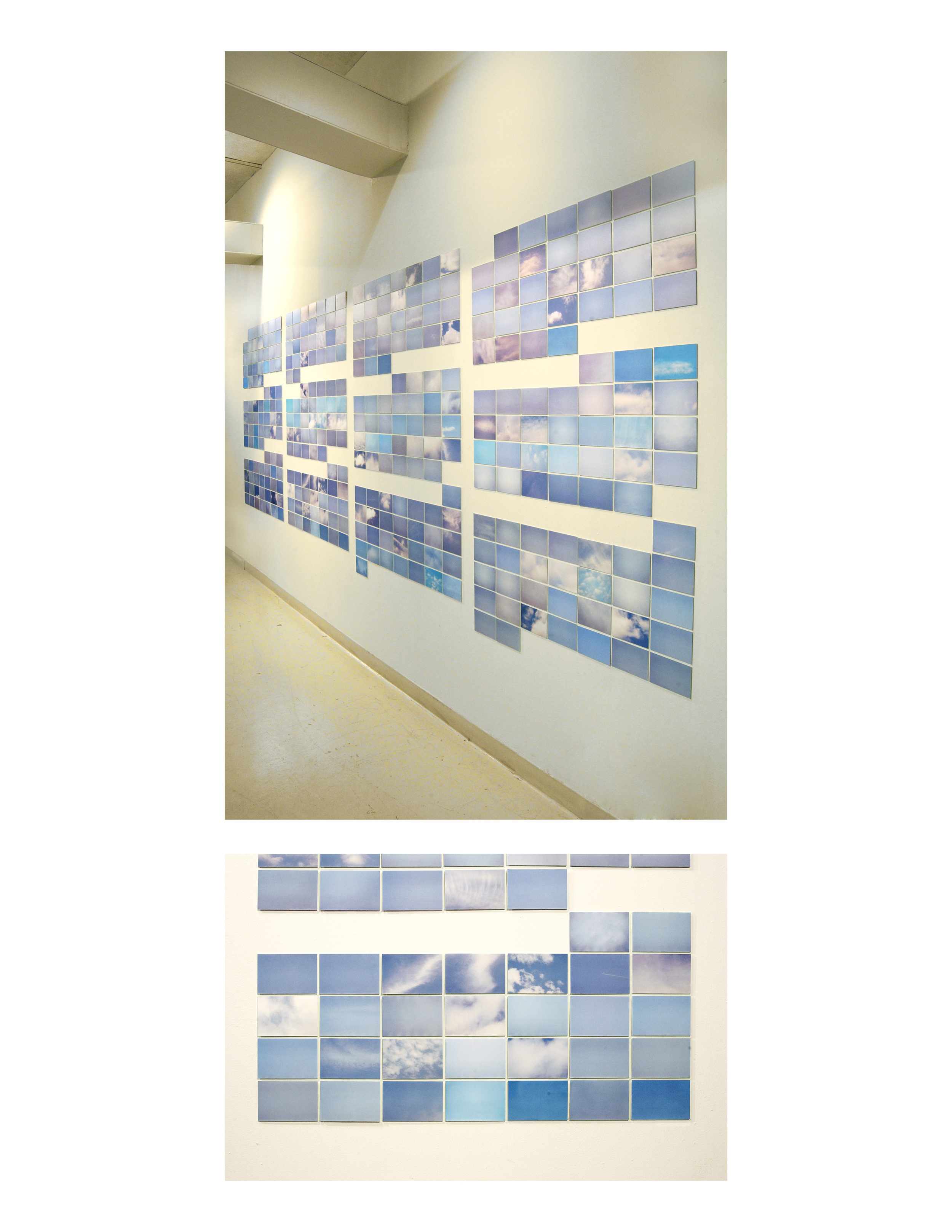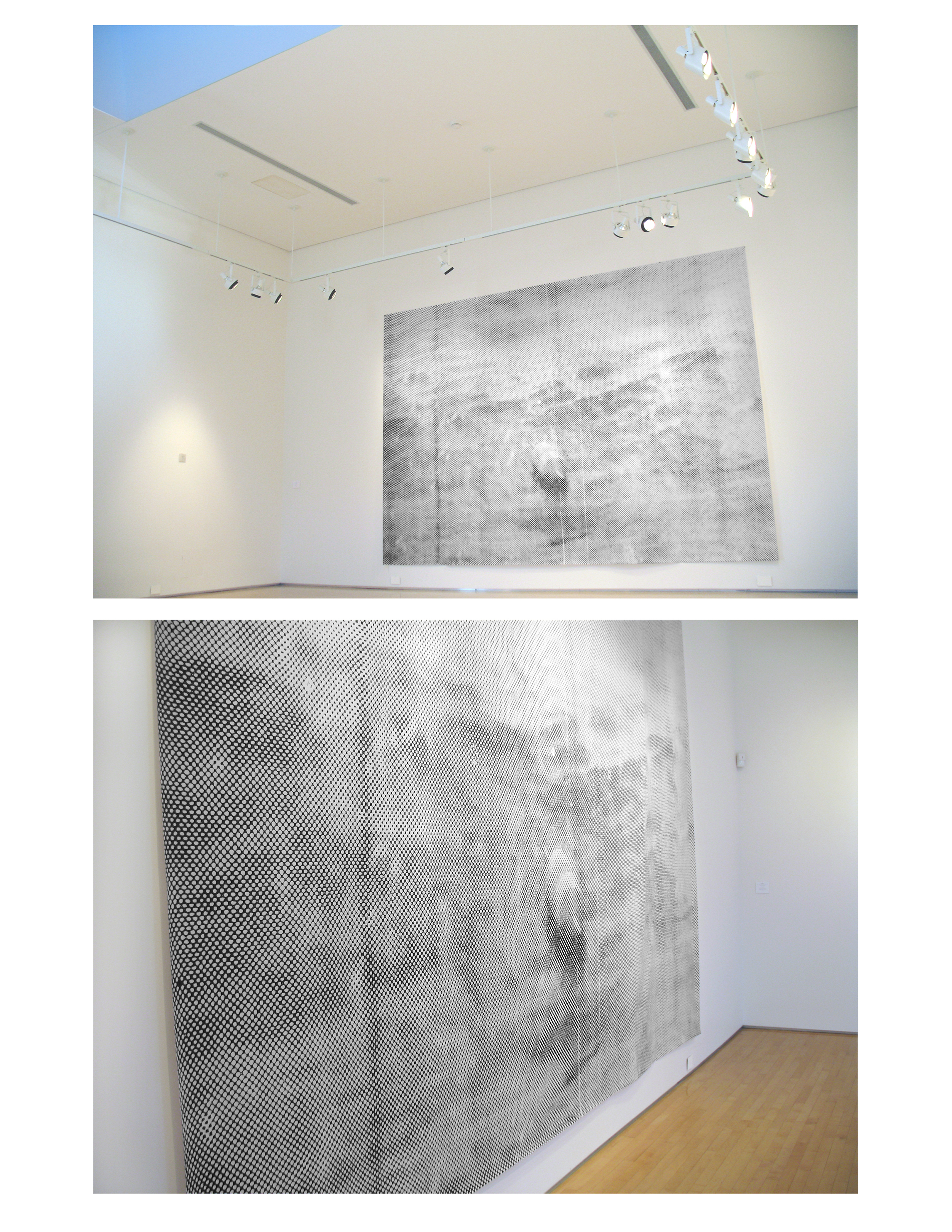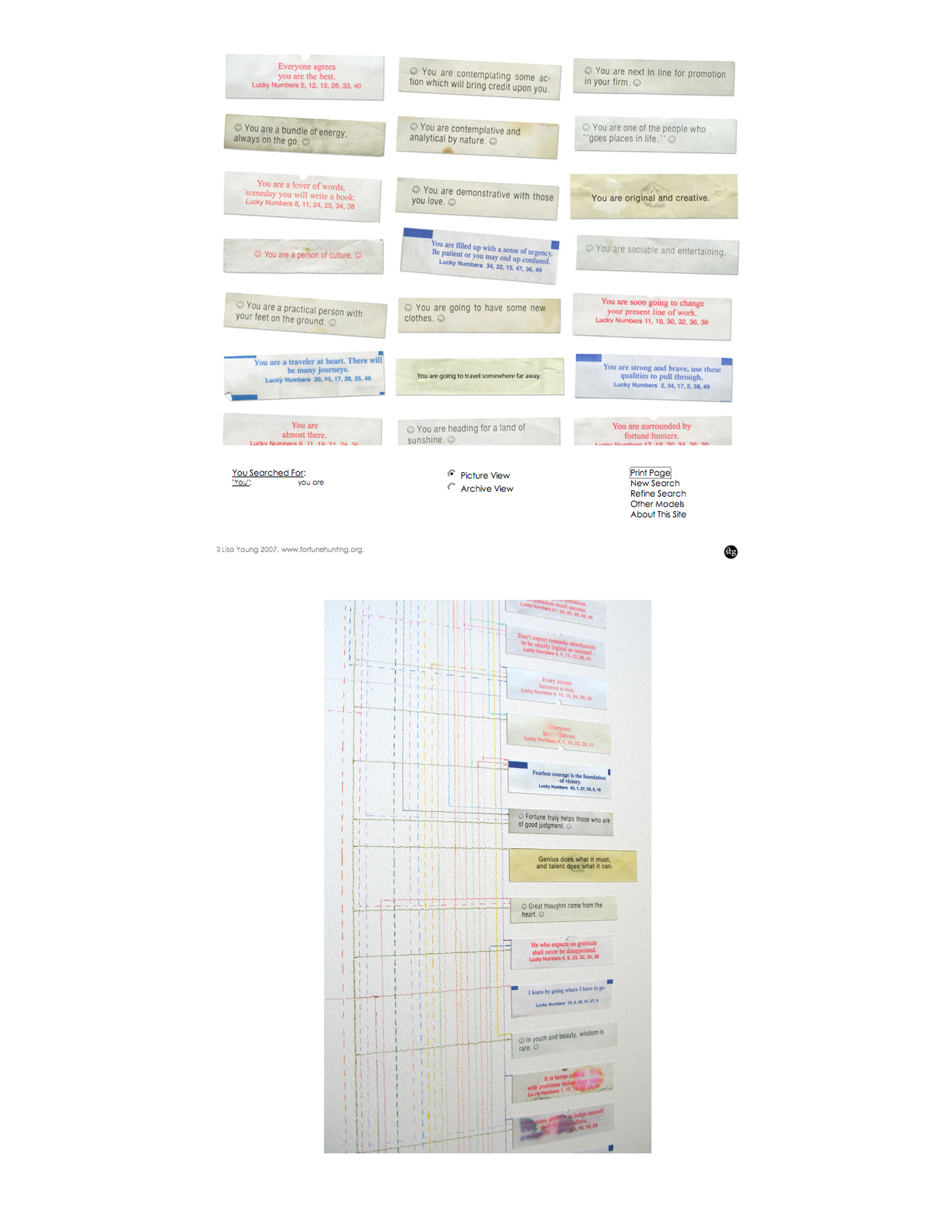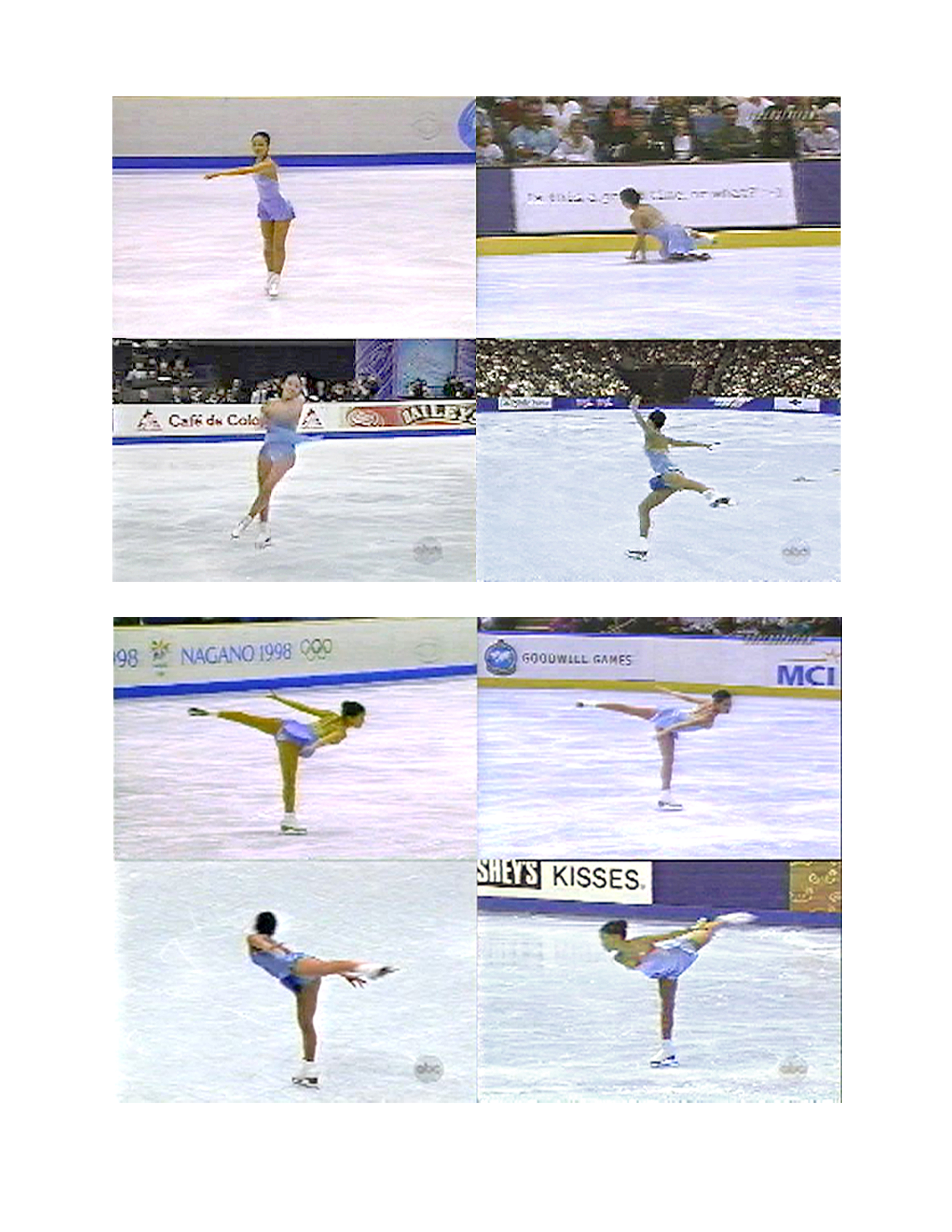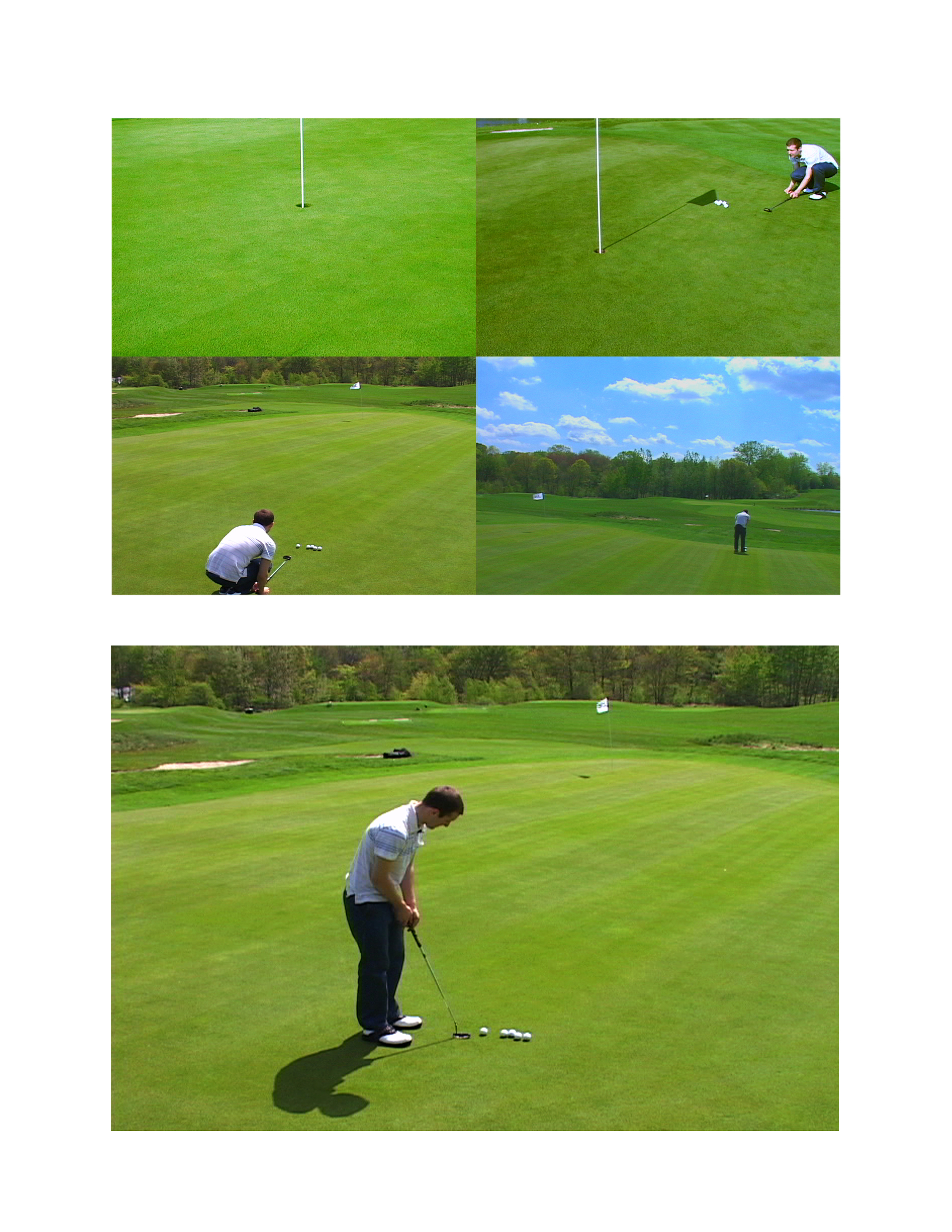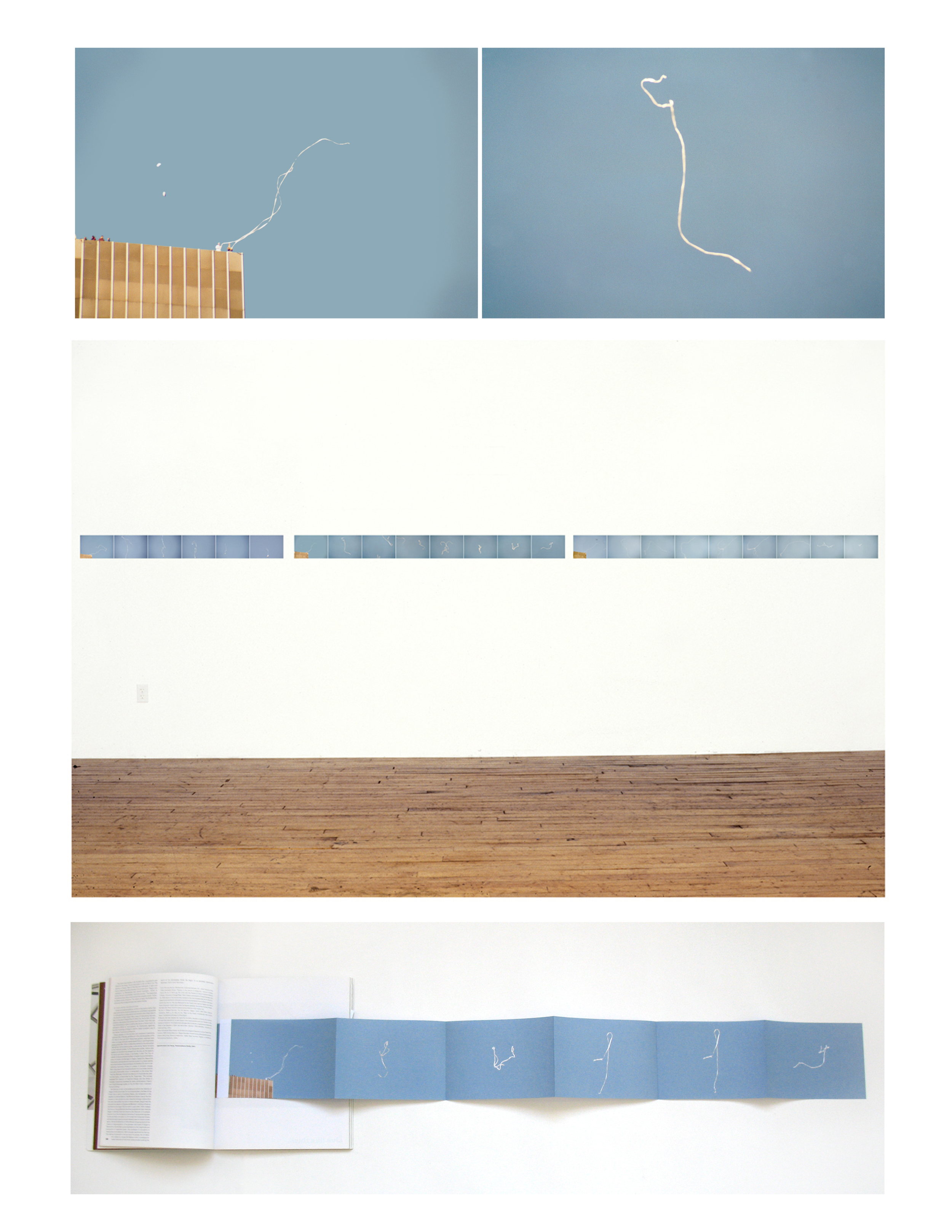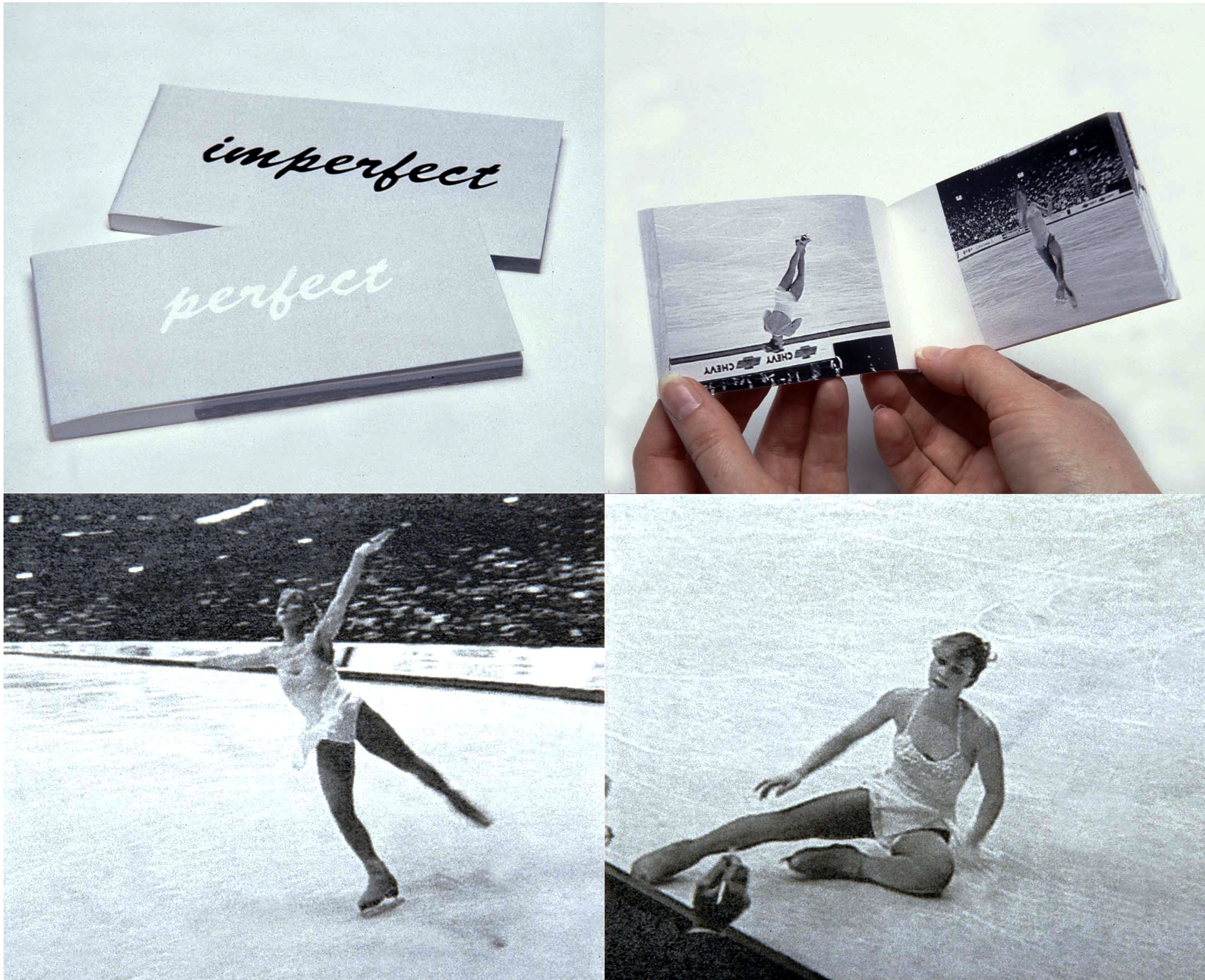Lisa Young
Curated by Cabinet Magazine
December 4, 2008 - January 24, 2009
Lisa Young holds a BFA from the University of Illinois, Chicago, IL; an MFA from Tufts University/School of the Museum of Fine Arts Boston, MA; and is an alumnus of the Whitney Museum Independent Study Program, New York, NY. She is currently a Visiting Critic in the Photography and Foundation Studies Departments of the Rhode Island School of Design, Providence, RI. Young's work explores the relationship between the temporal and the sublime through installation, books, video and web projects. Her exhibition venues include Wave Hill, Bronx, NY; Artists Space and White Columns, New York, NY; Flux Factory; Long Island City, NY; Bard College, Annandale-on-Hudson, NY; Artexte, Montreal, Canada; and a billboard project at 6150 Wilshire Boulevard in Los Angeles, CA (with Julia Meltzer and Clockshop). Young's editions have been distributed through Printed Matter and Pace Prints, New York, NY; Pierogi 2000, Brooklyn, NY; and Art Metropole, Toronto, Canada. The artist's work can also be found in the permanent collections of the Museum of Modern Art and The New York Public Library, New York, NY; the Harvard University Art Museums, Cambridge, MA; the The Rose Goldsen Archive of New Media Art, Cornell University, Ithaca, NY; and the Neues Museum, Weserburg, Germany. Young's exhibition at CUE marks her first solo show in New York.
For more information, please visit lisa-young.com.
Cabinet is a non-profit quarterly magazine of art and culture founded in 2000. The publication's aim is to encourage a new culture of curiosity by presenting essays, interviews and artist projects addressing a wide range of topics in language that is accessible to the non-specialist. The magazine believes that heightened curiosity forms the basis for an ethical and caring engagement with the world as it is and for imagining how it might be otherwise.
In addition to the periodical, Cabinet has also published a number of books, including Ilf and Petrov's American Road Trip (Princeton Architectural Press, 2006); Presidential Doodles (Basic Books, 2006), andThe Book of Stamps (2008). Curatorial work to date includes Odd Lots: Revisiting Gordon Matta-Clark's Fake Estates (Queens Museum of Art, Flushing, NY and White Columns, New York, NY, 2005) and the traveling exhibition The Paper Sculpture Show (with Mary Ceruti and Matt Freedman, 2003-2007) that was exhibited at twenty venues across the United States. Cabinet has also staged a large variety of symposia, multimedia events, radio performances and theater performances, including a re-enactment of a recent libel trial in Paris at Documenta 12 (2007). Cabinet has recently opened an event and exhibition space in the Gowanus Canal area of Brooklyn. For more information about the magazine and its various activities, visit www.cabinetmagazine.org.
ARTIST'S STATEMENT
A key activity in all my work is collecting, analyzing and repositioning image and text fragments. I act as a visual interpreter, sifting through the image sediment to investigate the fleeting nature of "perfect" moments and desired states of being.
I use everyday images (figure skating from prime time television, fortune cookie fortunes, tickertape parades) to examine cultural ideals and the desiring self. A video, Lyra Angelica, juxtaposes four figure skating performances that fall in and out of time with one another, creating a composite narrative that explores definitions of beauty, perfection, success and failure. A web archive, Fortune Hunting, allows for a linguistic exploration of fortune cookie fortunes, yet also becomes a vehicle for investigating common desires. A series of snapshots, Transcendent Machine, depict sections of toilet paper floating in mid-air photographed during a tickertape parade in New York City. In this narrative, the fan creates a transcendent machine, both producing and consuming the sublime.
I often use cropping and repetition, narrative sequences and a documentary mode as ways of organizing images or objects. I enjoy working within visual and linguistic structures that also allow for random or chance occurrences. Aesthetically, I juxtapose a casual approach to photography with carefully composed groupings that suggest disparate trajectories, mark the passage of time, or produce panoramic yet fractured spaces. The resulting works read as formal documents; a framing of my consciousness and observation; and as a series of ephemera that reflect the incomplete and transitory qualities of the sublime.
CURATOR'S STATEMENT
by Cabinet Magazine
Repeat After Me: Transcendence Is a Machine
What is the path to transcendence? In Pensées, the seventeenth-century philosopher Blaise Pascal provides a surprising answer. Having proved that it is rationally better to believe in God than remain a skeptic, he is rebuffed by his imaginary interlocutor, who simply responds, "I am so made that I cannot believe." Pascal's advice to his earth-bound friend is that he dedicate himself to repetitive physical rituals:
"If you are unable to believe, it is because of your passions, since reason impels you to believe and yet you cannot do so. ... There are people who ... have been cured of the affliction of which you wish to be cured: follow the way by which they began. They behaved just as if they did believe, taking holy water, having masses said, and so on. That will make you believe quite naturally."
Kneel again and again, and you will come to believe that you knelt because of your belief. The path to transcendence consists not of spiritual exercises but of a series of repetitive, mechanical gestures.
Aesthetics is informed by a similar paradox, one which Lisa Young's work explores by staging the intimate relationship between the transcendent, the beautiful, and the perfect, on the one hand, and the lowly, the repetitive, and the imperfect, on the other. Can a poetics based on repetition produce moments of transcendence? What happens when the imperfections just outside the frame of an apparently sublime moment or gesture are made visible? Transcendent Machine, for example, comprises photographs of sections of toilet paper thrown off a roof during a tickertape parade, the lowly material for an instant attaining a kind of ethereal grace. The video Lyra Angelica simultaneously presents four performances of the same ice-skating routine by Michelle Kwan at four different competitions. Though all the performances begin identically, they fall in and out of step with the symphonic music as the contingencies of each performance (including its errors) accumulate. Lisa Young's work is not designed, however, to celebrate the mundane or to mock our desire for the transcendent. Instead, her work points us toward a path at the end of which the mundane and the sublime, the mechanical and the transcendent, turn out to have always belonged to one another.
CATALOGUE ESSAY: Shane Brennan on Lisa Young
VIEW CATALOGUE

